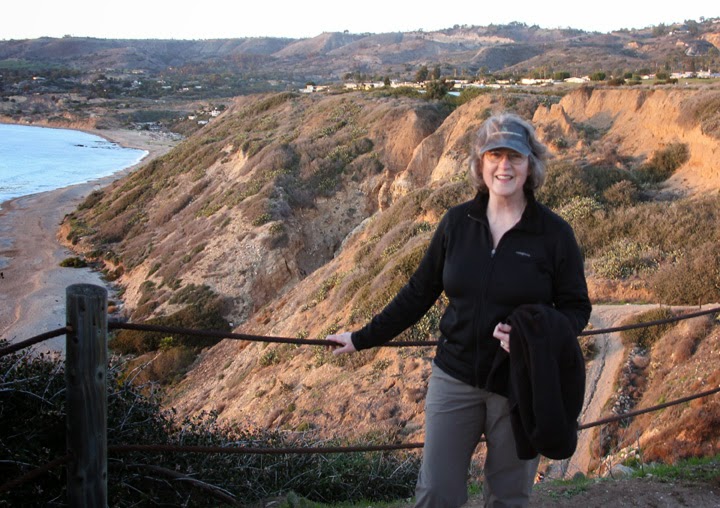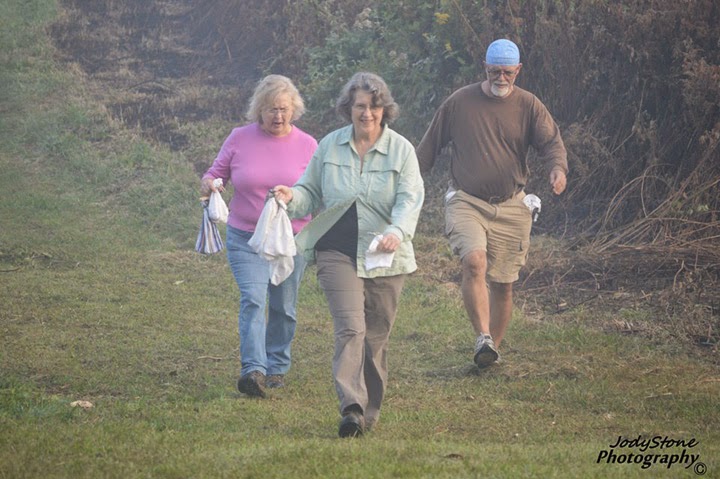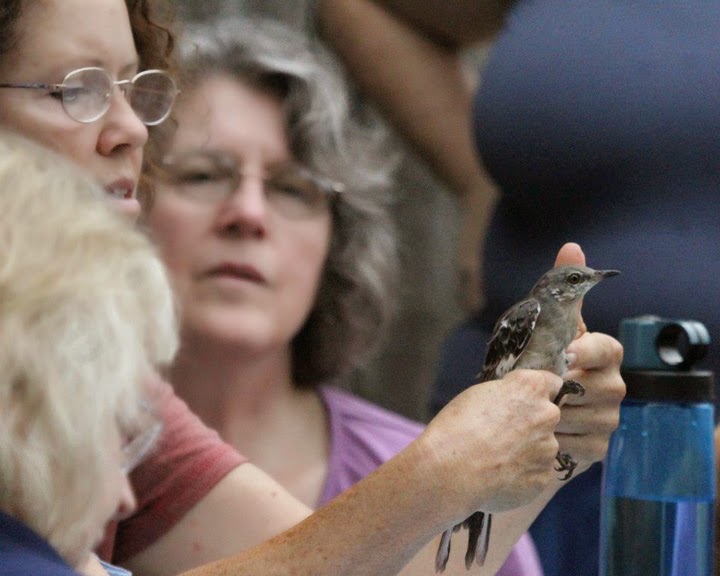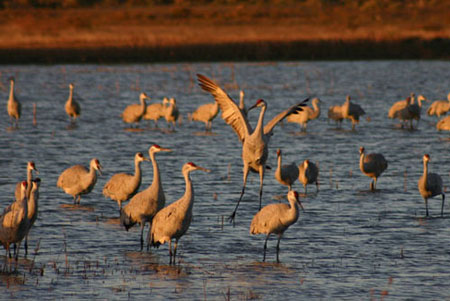Clearly the most profound experience of my stay at
Rose Mountain was our teachers, what they taught us about writing (and about living). Both
Natalie Goldberg and
Sean Murphy are talented and powerful mentors. I am fortunate to have experienced their wisdom and that it lives on in my mind, my practice and in their books.

But I have wondered what aspect of this experience made it so difficult to re-engage when I returned home, so much so, that it took a full two weeks before I could feel my feet firmly replanted in everyday life again. I have concluded it was the silence. The silence of the mountain, the silence we observed just after meeting each other--thirteen of us inclusive of teachers, the silence of meditation, of walking, of writing and of listening.

There was nothing superficial, shallow or pretentious to occupy our minds. Everything around us was real and pure, the air we breathed through our nose, the earth squarely solid beneath our feet, the whisper of the wind in the pines. There was nothing in the way of our opening up.

Without everyday distractions and demands to hold you to the surface, as your pen moves across the paper, what bubbles up is what matters. And what matters comes from a deeper place. And when you go deep you heal and become open to who you are.

As we read what we had written aloud to each other, this bubbling up was honored with silence, reverent, affirming silence. No reassurances bombarded you. There were no attempts to repair your composure or make your voice go away. No criticism or ‘fix it’ responses, no rushing in to make you feel better. There was only listening and silence.

And how does this feel? Uncertain at first. It’s unfamiliar. But what follows is a very settling and strengthened certainty that you have honored who you are. You have listened deeply and heard what you had to say and in the midst of that profound silence, you know that is all that really matters.
The challenge then becomes, how do you hold on to that when you return? How do you incorporate that into your everyday life despite all the surface clamoring? The answer is, you practice.
 Mexican Hat--Las Vegas NWR, Las Vegas, NM
Mexican Hat--Las Vegas NWR, Las Vegas, NM
 This becomes all the more frustrating when I've been able to capture satisfying images of some of the juvenile and female visitors that have managed to sneak a drink from the feeder.
This becomes all the more frustrating when I've been able to capture satisfying images of some of the juvenile and female visitors that have managed to sneak a drink from the feeder. But the male has no time to linger. He is ever vigilant, moving up and down, scanning between drinks.
But the male has no time to linger. He is ever vigilant, moving up and down, scanning between drinks. Yesterday morning while he was peacefully preening high on his perch, another male challenged him.
Yesterday morning while he was peacefully preening high on his perch, another male challenged him.  I caught this other-worldly image below as the intruder flashed him a second time before departing.
I caught this other-worldly image below as the intruder flashed him a second time before departing. Our scrappy king never even left his perch.
Our scrappy king never even left his perch.
 with time to preen...
with time to preen... 


 I'm content again.
I'm content again. 





 About the size of a June bug, but more like a lady bug in behavior, they came in shades of blue-gray to blue-green and seemed to like people. They frequently landed on shirts and crawled about, before leaving just as softly as they came. Once as I was writing, one crawled across my notebook, halting my pen. This is what reminded me of my cat, the way he nudged his way into my attention by unceremoniously sitting down in the middle of the page. The Rose mountain blue bug--another new acquaintance.
About the size of a June bug, but more like a lady bug in behavior, they came in shades of blue-gray to blue-green and seemed to like people. They frequently landed on shirts and crawled about, before leaving just as softly as they came. Once as I was writing, one crawled across my notebook, halting my pen. This is what reminded me of my cat, the way he nudged his way into my attention by unceremoniously sitting down in the middle of the page. The Rose mountain blue bug--another new acquaintance.
 But I have wondered what aspect of this experience made it so difficult to re-engage when I returned home, so much so, that it took a full two weeks before I could feel my feet firmly replanted in everyday life again. I have concluded it was the silence. The silence of the mountain, the silence we observed just after meeting each other--thirteen of us inclusive of teachers, the silence of meditation, of walking, of writing and of listening.
But I have wondered what aspect of this experience made it so difficult to re-engage when I returned home, so much so, that it took a full two weeks before I could feel my feet firmly replanted in everyday life again. I have concluded it was the silence. The silence of the mountain, the silence we observed just after meeting each other--thirteen of us inclusive of teachers, the silence of meditation, of walking, of writing and of listening.  There was nothing superficial, shallow or pretentious to occupy our minds. Everything around us was real and pure, the air we breathed through our nose, the earth squarely solid beneath our feet, the whisper of the wind in the pines. There was nothing in the way of our opening up.
There was nothing superficial, shallow or pretentious to occupy our minds. Everything around us was real and pure, the air we breathed through our nose, the earth squarely solid beneath our feet, the whisper of the wind in the pines. There was nothing in the way of our opening up. Without everyday distractions and demands to hold you to the surface, as your pen moves across the paper, what bubbles up is what matters. And what matters comes from a deeper place. And when you go deep you heal and become open to who you are.
Without everyday distractions and demands to hold you to the surface, as your pen moves across the paper, what bubbles up is what matters. And what matters comes from a deeper place. And when you go deep you heal and become open to who you are. As we read what we had written aloud to each other, this bubbling up was honored with silence, reverent, affirming silence. No reassurances bombarded you. There were no attempts to repair your composure or make your voice go away. No criticism or ‘fix it’ responses, no rushing in to make you feel better. There was only listening and silence.
As we read what we had written aloud to each other, this bubbling up was honored with silence, reverent, affirming silence. No reassurances bombarded you. There were no attempts to repair your composure or make your voice go away. No criticism or ‘fix it’ responses, no rushing in to make you feel better. There was only listening and silence. And how does this feel? Uncertain at first. It’s unfamiliar. But what follows is a very settling and strengthened certainty that you have honored who you are. You have listened deeply and heard what you had to say and in the midst of that profound silence, you know that is all that really matters.
And how does this feel? Uncertain at first. It’s unfamiliar. But what follows is a very settling and strengthened certainty that you have honored who you are. You have listened deeply and heard what you had to say and in the midst of that profound silence, you know that is all that really matters.
 In his book,
In his book,  If you look closely at the first photo, you will see missing feathers, loose tuffs of down and a scruffy rather than sleek, preened appearance—the rigors of pursuits. He begins his day in the pre-dawn light, emitting territorial chirps and paying several early visits to the feeder. I hope to have more photos soon and maybe a few of others passing through. Its mid-July. Early nesters from more northern states are beginning their migration now. I wonder how my tiny neighbor can be any more vigilant.
If you look closely at the first photo, you will see missing feathers, loose tuffs of down and a scruffy rather than sleek, preened appearance—the rigors of pursuits. He begins his day in the pre-dawn light, emitting territorial chirps and paying several early visits to the feeder. I hope to have more photos soon and maybe a few of others passing through. Its mid-July. Early nesters from more northern states are beginning their migration now. I wonder how my tiny neighbor can be any more vigilant.
 Not only did he announce his presence with
Not only did he announce his presence with 
 This gray-headed form of the dark eyed junco, with his pretty rufous patch, visited my tent in the Pecos wilderness one early morning, hopping inches from its screened doorway while I wrote.
This gray-headed form of the dark eyed junco, with his pretty rufous patch, visited my tent in the Pecos wilderness one early morning, hopping inches from its screened doorway while I wrote. We miss something, living in houses, that waking intimacy with nature that comes from being
We miss something, living in houses, that waking intimacy with nature that comes from being


 I was introduced to a pair of Townsend’s solitaires in just this way. While I was sipping coffee, they landed in a shrub near me with considerable chatter. The bolder of the two flew down to the ground in front of the pool, paused to look at me, then continued on to enjoy his drink.
I was introduced to a pair of Townsend’s solitaires in just this way. While I was sipping coffee, they landed in a shrub near me with considerable chatter. The bolder of the two flew down to the ground in front of the pool, paused to look at me, then continued on to enjoy his drink.


 and lingered to eat it...
and lingered to eat it... a voice then arose--"you mean you're taking pictures of it, not shooing it away?"
a voice then arose--"you mean you're taking pictures of it, not shooing it away?"

 The rufous hummingbird is the species with the longest migration in relation to its size, wintering in Mexico and breeding in northwest North America as far north as Alaska. Its breeding season begins March through May in a climate where the warm season is short but daylight is long. Some members of the species begin their southern migration as early as July which helps explain why the rufous hummingbird is such a significant pollinator in the west.
The rufous hummingbird is the species with the longest migration in relation to its size, wintering in Mexico and breeding in northwest North America as far north as Alaska. Its breeding season begins March through May in a climate where the warm season is short but daylight is long. Some members of the species begin their southern migration as early as July which helps explain why the rufous hummingbird is such a significant pollinator in the west. What also gets your attention--the rufous hummingbird is declining. One reason sighted is the disruption of nectar corridors. Hummingbirds and other pollinating species, such as bats, are dependent on clusters of nectar bearing plants during migration which is timed when plants are at their highest nectar production--refueling stepping stones along their journey. Anything that diminishes these pockets of plant communities also risks the survival of a number of species dependent upon them for nourishment.
What also gets your attention--the rufous hummingbird is declining. One reason sighted is the disruption of nectar corridors. Hummingbirds and other pollinating species, such as bats, are dependent on clusters of nectar bearing plants during migration which is timed when plants are at their highest nectar production--refueling stepping stones along their journey. Anything that diminishes these pockets of plant communities also risks the survival of a number of species dependent upon them for nourishment. 


 Thanks to the
Thanks to the  I give myself a little slack for oversights on this excursion. There was a lot going on while snapping these photos, one of which was a rumbling thunderstorm that had our trailblazing counsel urging us to move on.
I give myself a little slack for oversights on this excursion. There was a lot going on while snapping these photos, one of which was a rumbling thunderstorm that had our trailblazing counsel urging us to move on. And I needed our counsel. They made it possible for me to lag behind snapping photos while they made sure we knew the way home. (To see more New Mexico posts click
And I needed our counsel. They made it possible for me to lag behind snapping photos while they made sure we knew the way home. (To see more New Mexico posts click 

 As the pods stretch and dry, they become like coiled springs and when the moment is right, the pods snap, firing the seeds as much as 30 ft, leaving behind the curled pod. And if that’s not dramatic enough, the seeds themselves have a tiny tail called an ‘awn’ which curls when dry and straightens when wet, causing a crawling affect. Biologists believe that this motion allows the seed to find its way to a hole or crevice where the motion then helps the seed plant itself and hide from birds and mammals that would make it into a meal.
As the pods stretch and dry, they become like coiled springs and when the moment is right, the pods snap, firing the seeds as much as 30 ft, leaving behind the curled pod. And if that’s not dramatic enough, the seeds themselves have a tiny tail called an ‘awn’ which curls when dry and straightens when wet, causing a crawling affect. Biologists believe that this motion allows the seed to find its way to a hole or crevice where the motion then helps the seed plant itself and hide from birds and mammals that would make it into a meal.






